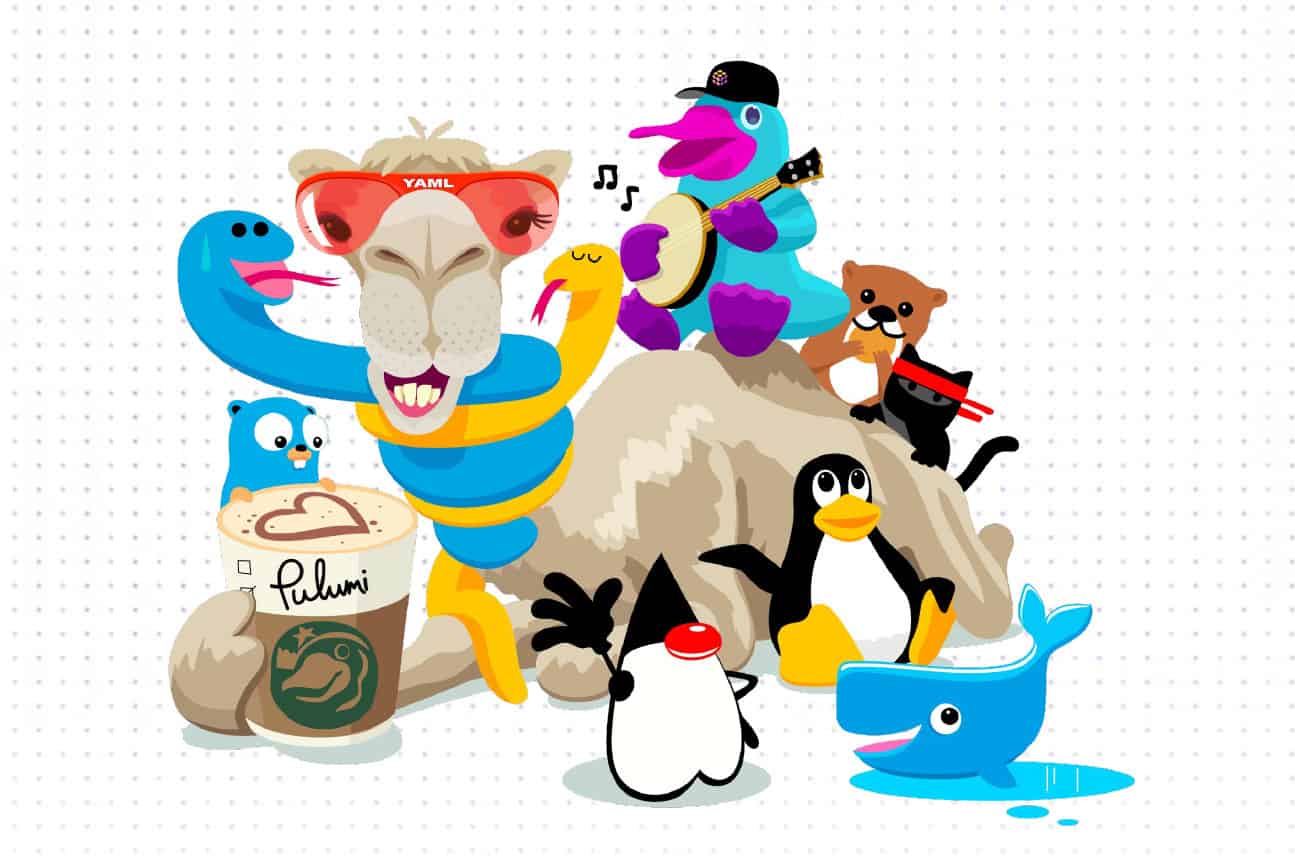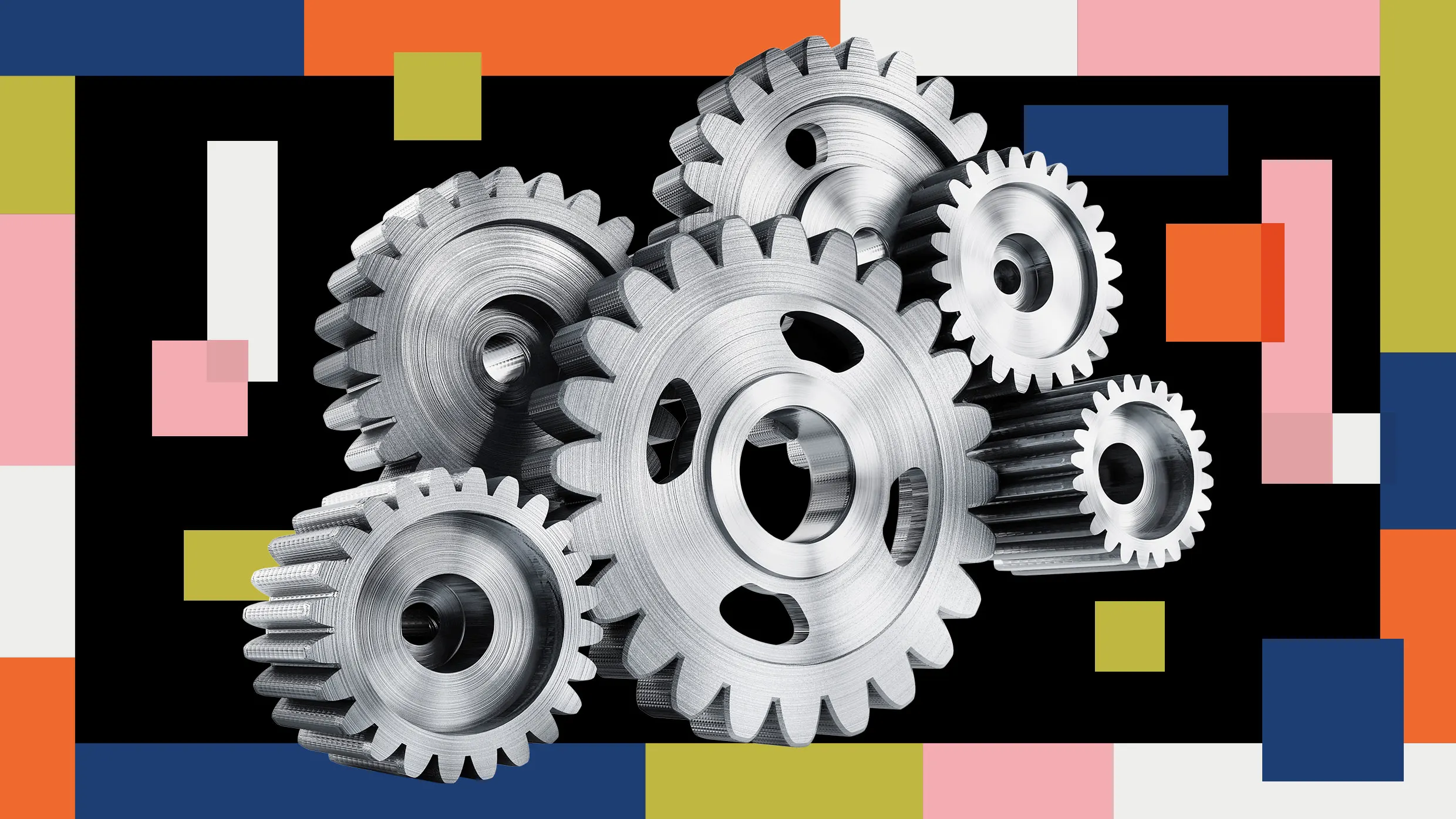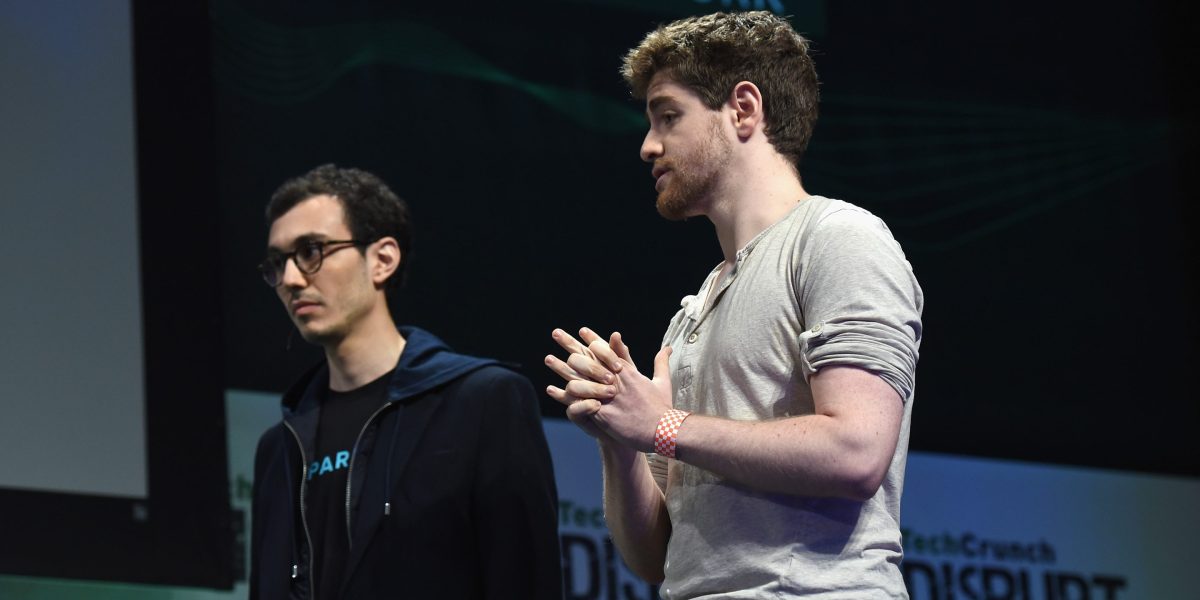#automation
#automation
[ follow ]
#ai #compliance #generative-ai #ai-agents #job-displacement #artificial-intelligence #prompt-engineering #chatgpt
fromTechCrunch
9 hours agoNotion launches agents for data analysis and task automation | TechCrunch
The agent will draw on all a user's notion pages and database as context, automatically generating notes and analysis for meetings, competitor evaluation reports, and feedback landing pages. The productivity platform said that the agent can create pages and databases, or update them with new data, properties, or views. Users can also trigger Notion agents from outside platforms that are linked to the service. For instance, you can ask Notion agent to create a bug tracking dashboard from various sources, including Slack, email, and Google Drive.
Productivity
fromTearsheet
15 hours agoWhy record keepers are becoming workplace financial wellness firms, ft. FIS - Tearsheet
More than half of Americans report that they will run out of money when they stop earning a paycheck and millions haven't saved enough to maintain their standard of living in retirement, There is an urgent need to re-imagine the role record keepers play in financial wellness, and it starts by leveraging technology to close the gap between capabilities and customer expectations.
Business
fromTechzine Global
19 hours agoCrowdStrike launches AI tools for patching and threat intelligence
CrowdStrike claims that Falcon for IT Risk-based Patching solves this problem by bringing vulnerability management and patch implementation together within the Falcon console. It uses proprietary intelligence and AI models to determine which vulnerabilities are most likely to be exploited in practice. With features such as Patch Safety Scores and sensor intelligence, teams should be able to patch faster, more securely, and on a larger scale without disruption.
Information security
EU data protection
fromChannelPro
20 hours agoRedefining the channel: Evolving partner models are unlocking innovation, value, and recurring revenue
Channel partners must evolve into consultative, AI-capable trusted advisors offering secure, automated workflow solutions to meet changing customer expectations and regulatory demands.
Coffee
fromFortune
1 day agoStarbucks CEO says the coffee chain won't lose its cash-strapped consumers because it's on its way to being a 'world-class customer service' company | Fortune
Starbucks will prioritize craft, quality, personalized service, handwritten touches, automation, and a pared-down menu to preserve sales amid economic uncertainty.
fromwww.housingwire.com
2 days agoClosinglock automated payoff ordering aims to combat fraud
Earlier this year, he and I were talking about some of the shared vision we had for the future of the industry, trying to implement AI in a thoughtful manner, White said. Sure, you can go bolt on ChatGPT to title company data and see if it does anything for you. I don't think that would be a very high value-add product, but there are thoughtful ways we can introduce AI into the title industry.
Real estate
fromCreative Bloq
2 days agoLearning to code just got more fun with this quirky indie farming game
The Farmer Was Replaced requires you to program a drone to automate repetitive farming tasks as you attempt to become the world's most efficient farmer. To do that, you need to use a Python-like language, which makes the game look like a fun, beginner-friendly introduction to the programming language (see our pick of the best game development software if you want to realise your own dream game).
Video games
fromBusiness Insider
3 days agoWalmart is emerging as an AI powerhouse with one big advantage
That's because most top AI companies - like OpenAI, Microsoft, Anthropic, or Meta - operate in a primarily virtual space, processing unfathomably complex rivers of information into more digital information. AI-adjacent companies like Nvidia, Intel, and Oracle focus on providing the physical infrastructure upon which the AI machines function. Then there are the companies that are using digital intelligence to deliver physical results through automation and augmented experiences, like Tesla and Amazon.
Artificial intelligence
Artificial intelligence
fromClickUp
4 days ago11 Best Moveworks Alternatives for AI-Powered IT Support in 2025
Choose Moveworks alternatives when cost, customization, integration, or onboarding limitations hinder IT/HR productivity; seek platforms with real-time support, advanced automation, and flexible pricing.
fromClickUp
4 days ago10 Best Data Entry AI Tools to Automate Your Workflow | ClickUp
Manual data entry is nobody's dream job. Copying invoices, logging survey results, updating spreadsheets... it's slow and repetitive. And one typo away from chaos. If your days feel like one endless copy-paste loop, it's time to bring in reinforcements. AI-powered tools for data entry are built to tackle the grunt work. They extract, clean, validate, and organize your information-all while you focus on work that actually moves the needle.
Artificial intelligence
fromClickUp
5 days ago10 Best Generative AI Tools for DevOps Teams in 2025 | ClickUp
Artificial intelligence (AI) has revolutionized everything from copywriting to medical imaging, but it's a huge time-saver for development teams, too. If your DevOps team is looking for a magic wand to boost security and accuracy, you need an AI tool. This isn't just a nice-to-have, either. AI-powered coding tools enhance the software development lifecycle, making continuous integration and delivery more efficient. They even have the firepower to automate workflows for the most complex development projects.
Software development
fromBusiness Insider
6 days agoAI is automating technical skills. Here are the soft skills you need.
If hard skills are increasingly being automated, employers are shifting focus to what AI can't replicate: creativity, empathy, critical thinking, and other essential soft skills. For years, technical abilities were king, but the tide may be turning. Indeed's Hiring Lab took a look at job postings and analyzed which soft skills were listed. The top were communication, leadership, and organizational prowess. Forty-three percent of all job listings had at least one soft skill advertised.
Business
fromBusiness Insider
1 week agoIs 'learn to code' still good advice? 8 executives weigh in.
As AI coding tools like GitHub Copilot and Codex become more prominent, certain aspects of coding are being automated. For instance, Alphabet CEO Sundar Pichai said in the company's first quarter earnings call this year that over 30% of Google's code is AI-generated. Microsoft CEO Satya Nadella said in April that for some company projects, AI writes between 20% and 30% of the code, and it's increasingly using agents to review code, as well.
Tech industry
fromDigiday
1 week agoHow local advertisers are breaking through in a fragmented media landscape
The infinite options available - there are more than 32,200 linear channels and 89 unique streaming sources in the U.S. alone - can often feel more like a challenge and less like an opportunity. But by simplifying media planning and buying, leveraging automation and unifying data and audiences across platforms, local advertisers are deriving more value from their campaigns and driving better business outcomes - vital in an environment in which marketers everywhere are forced to do more with less.
Marketing
fromThe Hacker News
1 week agoThe Time-Saving Guide for Service Providers: Automating vCISO and Compliance Services
Managed service providers (MSPs) and managed security service providers (MSSPs) are under increasing pressure to deliver strong cybersecurity outcomes in a landscape marked by rising threats and evolving compliance requirements. At the same time, clients want better protection without managing cybersecurity themselves. Service providers must balance these growing demands with the need to work efficiently, deliver consistent results, and scale their offerings.
Information security
fromBusiness Insider
1 week agoIf you're worried about AI taking your job, these careers are the safest bets, an AI politics professor says
At the top of her list are tradespeople, including electricians, plumbers, and repair workers, who perform hands-on tasks in messy, real-world environments that machines still struggle to navigate. She also pointed to care jobs like nursing, primary school teaching, and nursery teaching as roles that heavily rely on empathy, judgment, and social connection - qualities that algorithms can't yet mimic.
Artificial intelligence
fromFortune
1 week agoWhy Walmart's CEO says AI won't lead to lower headcount | Fortune
And if Walmart U.S. CEO John Furner's instincts are right, that number will hold steady in the coming years, despite all the talk of how the growing use of artificial intelligence (A.I.) might decimate jobs across the economy. "When we look out two years, three years, five years, where I think we'll be is we'll have roughly the same number of people we have today,"
Artificial intelligence
fromAol
1 week agoI'm an AI strategist who helps clients improve their workflow. These are the first AI tools and skills I tell high performers to learn.
Most business owners who hire me to integrate AI into their workflow are aware of AI trends like agents and automation, but they're completely overwhelmed by it and have no idea where to begin. Their employees tend to have even less AI knowledge and just think of it as a basic chatbot. Other clients want to jump right into complicated AI tools without learning any of the building blocks.
Artificial intelligence
Artificial intelligence
fromBusiness Insider
1 week agoI'm an AI strategist who helps clients improve their workflow. These are the first AI tools and skills I tell high performers to learn.
Businesses should start AI adoption with ChatGPT, Gemini, and Claude, learn effective prompting, and build automated workflows to grow brands organically.
fromeLearning Industry
1 week agoHow No-Code Is Transforming L&D In Healthcare, Banking, And Manufacturing
By allowing non-technical professionals to build applications, workflows, and integrations without writing a single line of code, no-code is revolutionizing the way L&D teams operate. Instead of being passive consumers of tools, L&D leaders can now actively design adaptive, personalized, and scalable learning ecosystems. This shift is particularly evident in industries like healthcare, banking, and manufacturing, where compliance, skill agility, and innovation are critical.
Online learning
fromwww.housingwire.com
1 week agoAssurant unveils insurance verification tool HOIVerify
What we recognized was, buying a home is a really complex process, and there are a lot of documents and requirements, and just one of those was verification of insurance. As it exists today, that process is complicated, so we saw an opportunity to say, how can we take that piece of it and just simplify it? Tuttle shared that HOIVerify can take a process that once took several days and perform it in seven seconds.
Real estate
Artificial intelligence
fromFortune
1 week agoGen Z is laughing in the face of the AI jobs apocalypse. I see it in my classroom every day
Gen Z faces heightened job vulnerability from AI, prompting coping humor, AI-informed career choices, and shifts toward human-centric roles amid changing entry-level expectations.
fromwww.housingwire.com
1 week agoModular construction could help address the housing shortage
The findings suggest that modular methods can reduce labor needs by up to 40%, speed project timelines by as much as 50%, cut costs when executed at scale and even reduce emissions. As a result, the modular industry poses a solution to some of the construction industry's biggest challenges including but not limited to costs, worker shortages and housing demand.
Real estate
Artificial intelligence
fromBusiness Insider
2 weeks agoA16z partner says software engineers spent decades disrupting industries. Now, they're the 'disrupted.'
AI-driven code tools are fundamentally changing software engineering, shifting engineers from disruptors to the disrupted and altering roles, workflows, and job prospects.
fromwww.housingwire.com
2 weeks agoRestb.ai enhances MLS Tools with compliance solution to adhere to NAR commission settlement
The AI-powered tool enables MLSs to automatically identify potential risks tied to buyer agent compensation language in submitted documents. The solution automatically scans submitted PDFs for typed or handwritten references to commission or compensation and then categorizes those references into high, medium or low risk levels. Oregon's Regional MLS (RMLS) is one of the first to adopt the tool, making it available to its roughly 14,000 subscribers.
Real estate
fromThe Art Newspaper - International art news and events
2 weeks agoComment | 'AI will transform the art market-just not how you expect'
In an age when artificial intelligence (AI) has become the secular religion of virtually every industry discussion, the stark contrast in reactions to its rise is striking. Entrepreneurs around me, from finance to retail, rush eagerly toward AI, chasing better client experiences and smoother operations. Yet the art world continues to treat AI with suspicion, viewing it more as an existential threat than as a potent economic ally, a troubling stance for a market that, over the past two years, has faced multiple macroeconomic shocks.
Artificial intelligence
Online learning
fromeLearning Industry
2 weeks agoLMS Administration: The Unsung Engine Of Enterprise Learning
Effective LMS administration transforms learning platforms into measurable, scalable, compliant systems that enable impact-driven L&D through governance, automation, and data-driven operations.
fromCreative Bloq
2 weeks agoHow smart AI tools are changing the way animation is made
AI is changing that. Over the next five years, we'll see a shift from massive studios to small, focused teams capable of delivering high-quality results faster, cheaper, and with greater creative control. This evolution isn't just about cutting costs; it's about redesigning the entire pipeline to make better decisions sooner, iterate faster, and invest more deeply in the work that audiences actually notice.
Film
fromwww.theguardian.com
2 weeks agoSzoboszlai's sublime dummy something more than a cog in Liverpool's red machine | Barney Ronay
Tech types will often talk in reassuring terms about the future co-evolution of humanity and machines. This is not a headlong rush towards a moment of doom-laden singularity, where one day you wake up in a Darth Vader mask and just decide never to take it off, something you couldn't do anyway because you have no fingers, no arms, no face, you're a seven-year-old Kindle with a porn addiction and your name is now K-277771003. This isn't going to happen.
Artificial intelligence
Artificial intelligence
fromFortune
2 weeks agoGartner predicts an AI-fueled 'lonely enterprise' for finance workers if CFOs don't take action
AI-driven automation and organizational shifts will transform finance roles, increase isolation, and create talent shortages unless CFOs proactively adapt teams and workflows.
fromTechRadar
3 weeks agoWebsites still matter, but can't survive on their own
A creator's Instagram inbox used to be a beautiful mess. One minute it was quiet. The next, a product Reel pops off and they get buried in fire emojis, product questions, and a dozen "Is this still in stock?" DMs. It was certainly exciting. And a bit overwhelming? Manually keeping up often meant lost sleep, missed sales, and a lot of copy-pasting.
Social media marketing
Artificial intelligence
fromBusiness Insider
3 weeks agoWhen I let ChatGPT manage my social life for a week, AI texted my friends and picked my outfits. It was strange but helpful.
ChatGPT handled social logistics and messages, reducing overthinking, increasing presence and confidence, while occasional errors required human judgment.
fromwww.housingwire.com
3 weeks agoThe real work of AI in mortgage tech begins now
For decades, the mortgage industry has relied on automation to reduce errors, standardize workflows, and cut loan turn times. Now, AI is enhancing those systems with real-time data interpretation, predictive modeling, and intelligent decision support. For the first time, we're seeing AI extend far beyond basic productivity tools. Lenders are using it to improve lead scoring, accelerate underwriting, enhance fraud detection, and even support post-close analysis.
Artificial intelligence
[ Load more ]






















